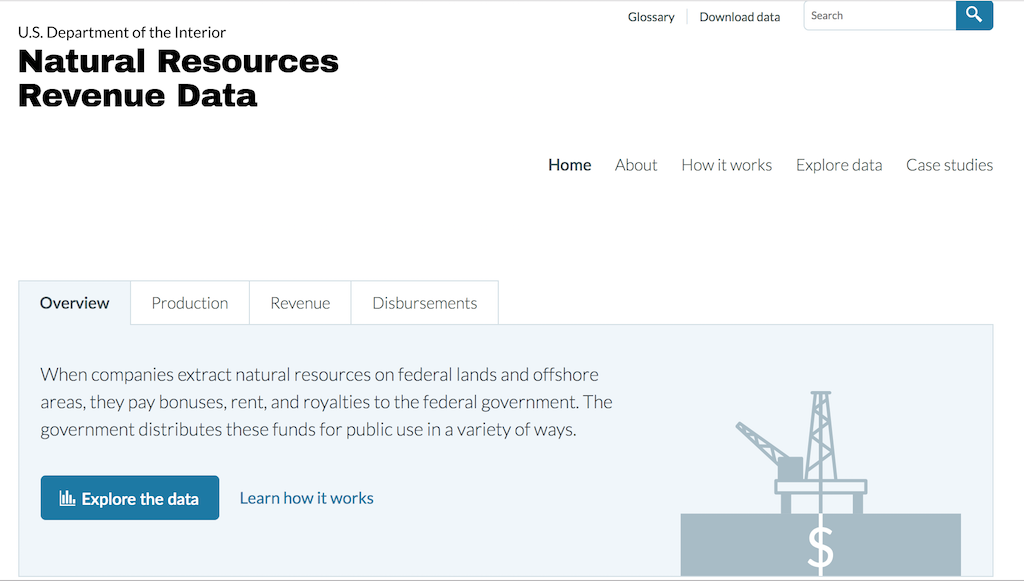Department of the Interior
Visualizing public lands data

Project details
Previously, if you looked out your window and saw an oil rig on public land, there was no place to go to learn about the costs and benefits of that operation. The Department of the Interior and 18F worked together to create a new way of reporting on natural resource extraction on federal land. The Natural Resources Revenue Data (NRRD) site is designed to help the public learn more about that oil rig and other extractive activities on public lands and waters.
Our small digital team at the Office of Natural Resources Revenue continues the work of user-centered and open-data design started by 18F. - Digital team at the Office of Natural Resources Revenue
Moving from PDFs to interactive websites using the Federalist platform
Traditionally, these types of reports were compiled once a year as printed documents or PDFs. 18F worked with Interior, extractive industry representatives, and civil society groups to produce a user-centered interactive website that makes the data easier to explore, download, and understand. Data visualizations allow people to dive into the information that’s most important to them. Throughout the site, plain language explanations help people understand the complex issues of extractive policy and included a glossary for terms like “lease condensate” and “wet gas.”
To build the website, the team chose Federalist as the platform to develop a working prototype. Federalist allowed the team to quickly launch to production, collect feedback from users, and continuously make improvements to the site’s infrastructure.
Since the release of the first report, the interactive website has become a model for other countries working on opening up extractive industries data. The Office of Natural Resources Revenue, the Interior office responsible for the report, has also adopted user-centered design and plans to apply it to their other digital services. You can follow the The Natural Resources Revenue Data project and the Office of Natural Resources Revenue at their blog.

